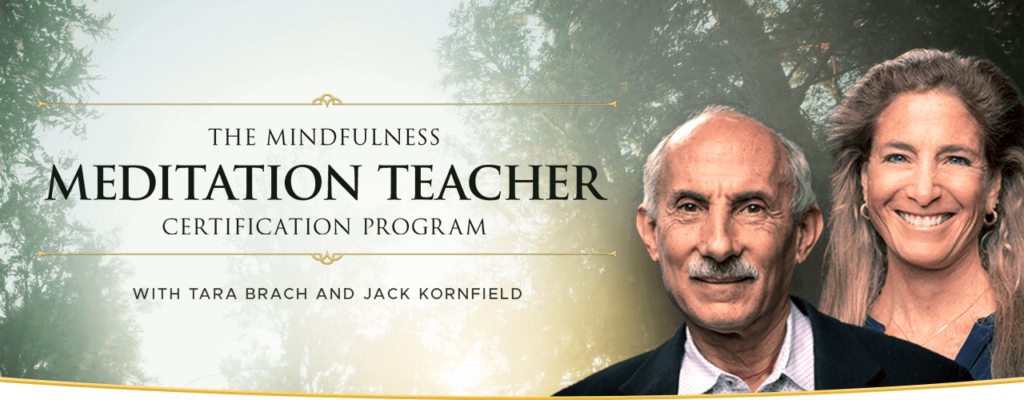Feeling overwhelmed by incessant worries and negative thoughts? Trapped in your own mind, analyzing situations from every angle until you spiral into anxiety and stress?
If this sounds like you, learning the practice of detached mindfulness could be a game-changer. Unlike traditional mindfulness where you focus on the present moment, detached mindfulness teaches you to simply notice your thoughts and let them go – without getting caught up in them.
In this article, you’ll discover exercises to cultivate detached mindfulness and free yourself from the shackles of excessive overthinking. You’ll learn how to observe your thoughts from a detached stance, almost like watching clouds pass by in the sky. Best of all, you’ll gain insights into applying this skill in your daily life for reduced stress, improved focus, and an unshakable sense of inner calm.

How to Practice Detached Mindfulness
Ever notice how thoughts can take over and consume your entire reality? One moment you’re going about your day, the next you’re spiraling down a rabbit hole of worries and “what-if” scenarios. Detached mindfulness flips this draining pattern on its head. It’s the secret to observing your thoughts objectively, without judgment or needing to react.
At its core, detached mindfulness combines two key elements. First, mindful awareness – bringing your full attention to the present moment, noticing thoughts and feelings as they arise. But here’s where it diverges from regular mindfulness: the second component is detachment, a stance of allowing those thoughts and emotions to simply be, without getting tangled up in them.
Imagine your thoughts are like clouds drifting across the sky. You watch each one come and go, but you don’t run outside trying to push the clouds away or lasso one back because it’s your favorite. That’s detached mindfulness in a nutshell – the ability to let thoughts and feelings flow freely, without needing to control or engage with them.
To cultivate this skill, start by sitting comfortably. Take a few grounding breaths. When thoughts arise, simply notice them, almost as if they belong to someone else. “There’s the thought that I’ll fail at this meeting.” Then, consciously decide not to argue, analyze or dwell on that thought. Just allow it to drift on by.
Any time your attention snags on a thought, gently reign your focus back to your breathing or your surrounding environment. The intention isn’t to clear your mind, but rather attend to the thought without judging it as good or bad. Think of yourself as the impartial observer.
With practice, you’ll become adept at spotting thoughts without needing to latch onto them or get swept away. It takes repetition, but soon this detached mindset will become second nature during challenging situations that once triggered overthinking. You’ll respond to stressors from a calmer, more collected headspace.

Exercises to Develop Detached Mindfulness
Ready to supercharge your detached mindfulness practice? Exercises are a potent way to embody and reinforce this liberating skill. They’ll quite literally rewire your brain to observe thoughts objectively rather than compulsively latch onto them.
Let’s start with a classic visualization: Picture a tiger prowling through a dense jungle. Don’t try to control or change this mental image – simply watch the tiger’s spontaneous movements. Notice how it stretches, slinks about, even licks its paw without any input from you. This separates you as the impartial observer from the unfolding scenario in your mind’s eye.
Another powerful exercise has you visualize a bustling city street or parade route. The steady stream of people represents the flow of thoughts constantly passing through your consciousness. Your goal? Let those “thought figures” march by without stopping to interrogate or engage with any of them. Stay a bystander witnessing the dynamic parade of your inner world.
For a more elemental metaphor, envision leaves gently floating along a winding forest stream. As each leaf (thought) drifts into view, resist grabbing onto it or giving it meaning. Allow it to meander off on the meandering current. You’re cultivating the skill of peek-and-release, observing fleetingly without judgment or attachment.
Of course, the ultimate test lies in applying detached mindfulness to those charged, persistent thoughts that typically derail you into overthinking. When you notice a worry-thought spark up (“What if I bomb that presentation?”), consciously decide to let it pass by unengaged. Treat it as impassively as you would any other sensation.
With practice, you’ll break long-held habits of spinning out or ruminating on every wayward anxiety. In those moments, you’ll respond from a grounded, calm center instead of your chaotic inner narrative. These simple exercises are your vehicle for getting there.
Common Obstacles and Pitfalls
Mastering detached mindfulness is a journey, and like any worthwhile skill, it comes with its share of obstacles and pitfalls to navigate. Forewarned is forearmed, as they say! Knowing the common challenges upfront will help you steer clear of dead-ends on your path to inner calm.
First up, avoid the trap of using detached mindfulness as a way to get rid of uncomfortable thoughts or feelings. That’s the antithesis of this practice. Wanting to eliminate every difficult emotion defeats the entire purpose of observing your inner experience impartially. You’re not aiming for an empty mind – simply one that isn’t judgmental or reactive.
Speaking of reactivity, don’t fall into the pattern of treating detached mindfulness as a thought-control or relaxation technique. Those are different tools entirely. This practice is about purposefully allowing thoughts, not suppressing or manipulating them. If you find yourself trying to “relax” or change the channel on challenging emotions, you’ve veered off course.
Perhaps the biggest obstacle, however, is impatience. We’re socialized to want immediate results, but rewiring life-long habits of overthinking takes diligent repetition. There will be days when your thoughts feel as sticky as ever, tempting you to abandon ship. Persist! Practice makes progress when it comes to any new skill, detached mindfulness included. With time and consistency, you’ll master this invaluable perspective shift.
Buckle up, stay vigilant about the pitfalls, and you’ll be smooth sailing toward a profound new relationship with your restless mind. An unshakable sense of inner calm awaits those willing to embrace the practice wholeheartedly.
Tips For Practice Detached Mindfulness
You don’t need to dive straight into observing your most charged, anxiety-provoking thoughts. Ease into the practice by applying detached mindfulness to neutral thoughts first. Notice the clouds drifting by or birds chirping outside – just observing without judgment or getting hooked. Once you get the hang of it, you can level up to working with triggering thoughts.
Metaphors and visualizations are powerful tools for reinforcing the detached stance. Picture thoughts as clouds floating across an open sky or leaves bobbing along a stream. These visuospatial associations will help cement the mindset of non-attachment. You’re the impartial observer, watching mental events unfold without engaging them.
Consistency breeds comfort and competency. Like building any other skill, regular practice is key. Aim to spend 5-10 minutes per day simply allowing thoughts to arise and pass without judging, arguing or attaching significance. With repetition, detached mindfulness becomes second nature in stressful situations.
For the most profound mindset shift, combine your detached mindfulness practice with therapy. Unhelpful meta-cognitive beliefs often underlie overthinking and rumination. (“I can’t control my thoughts” or “Worrying prevents bad things from happening.”) A skilled therapist can help identify and reframe these counterproductive assumptions for lasting change.

Final Thoughts
At its core, detached mindfulness is a revolutionary way to relate to the very thoughts that cause you stress and suffering. Rather than compulsively buying into every worry that arises, you’ve now constructed an observer perspective. From this impartial stance, thoughts are inevitably seen as transient mental events rather than facts to be furiously argued with.
Through visualization practices, you’ve strengthened the muscle of allowing thoughts to breeze by without grabbing hold. With consistency, this detachment becomes automated – your new default response in anxiety-provoking situations. Where you once spun out in rumination, you’ll respond with grounded calm.
Working with a therapist to change unhelpful thought patterns, combined with practicing detached mindfulness, completely transforms how you relate to all the thoughts constantly running through your mind. Once you master detached mindfulness and replace negative thinking styles, you achieve an unshakable inner calmness. You ready to stop letting overthinking bully you?
FAQ
What is the Difference Between Mindfulness and Detached Mindfulness?
The main difference between regular mindfulness and detached mindfulness is the element of detachment or non-attachment.
Mindfulness involves bringing present moment awareness to your thoughts, emotions, and physical sensations. The aim is to observe these internal experiences with openness and without judgment.
Detached mindfulness takes this a step further. In addition to the present moment awareness, there is an explicit stance of detachment from the thoughts and feelings that arise. The goal is to notice them, but not latch onto them or get caught up in them.
With regular mindfulness, you may still find yourself analyzing, reacting to, or trying to change the thoughts and emotions you become aware of. Detached mindfulness cultivates an impartial observer perspective - you see the thoughts and feelings, but don't engage with them or view them as truth.
Another way to put it:
Mindfulness = Present moment awareness
Detached Mindfulness = Present moment awareness + Conscious detachment/non-attachment
So detached mindfulness combines the quality of awareness from mindfulness, with the quality of non-reactivity and separating your sense of self from your transient thoughts and emotions. It's about allowing internal experiences to arise and pass without interacting with them.
Detached Mindfulness Exercises
Some common detached mindfulness exercises include:
Thought Visualization
One exercise is to visualize thoughts as clouds drifting across the sky, or leaves floating down a stream. The idea is to watch these visualized "thoughts" arise and pass by without engaging with them or trying to change them in any way.
Traffic Thoughts
Imagine you are sitting next to a busy road, and your thoughts are like the cars, trucks, and pedestrians passing by. Practice observing each thought without following it or investing in its content.
The Windowpane Metaphor
Picture thoughts as images appearing on a windowpane in front of you. Don't try to wipe away or alter the images - simply let them come and go while you remain an impartial observer.
Working With Triggers
Directly apply detached mindfulness to triggering thoughts that typically spur overthinking or anxiety. Notice the thought, but resist the urge to analyze or ruminate on it. Let it pass without attachment.
Body Scan
Do a body scan meditation, noticing physical sensations throughout your body. When thoughts arise, simply acknowledge them as external events and refocus on the body scan.
The key across these exercises is keeping an open, non-judgmental awareness of internal experiences like thoughts and emotions, while actively stepping back to observe them from a detached, decentered perspective.

You may also be interested in:
1. What are the Three Components of Mindfulness?
2. Reasons Why You Should Practice Mindfulness
3. How to Be Mindful in Everyday Life




